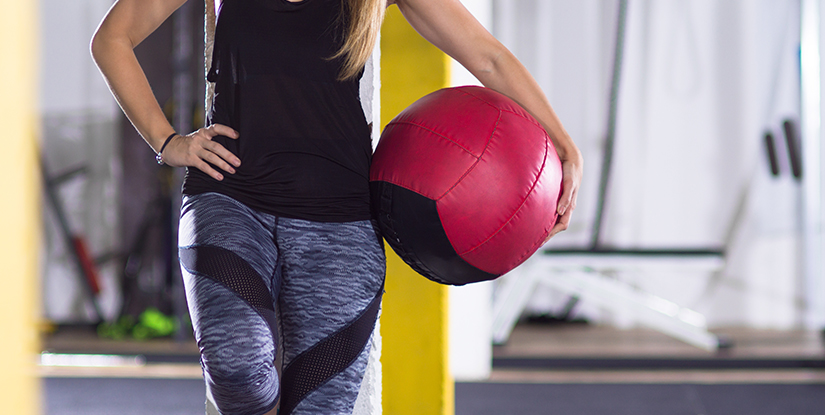I’ve had more than one person ask me if we carry a 50kg medicine ball at the gym. The short answer? Nope. And honestly, there’s a good reason for that. Most commercial gym clients don’t need it—and most won’t touch it more than once. But hey, I get the hype. It looks hardcore. It screams brute strength and strongman vibes. Still, when it comes to real-world training, there’s a better way. Let me explain.
Who Actually Uses 50kg Balls
Now don’t get me wrong—a 50kg medicine ball does have a place. But that place isn’t your average gym floor.
I’ve mostly seen these used in elite performance centers or during strongman-style training. Think: load carries, brute-force slams, or odd-object conditioning. This isn’t something you toss around in a group class.
In fact, most of the time, a “50kg med ball” isn’t even a true med ball. It’s more like a sandbag or a dead ball—zero bounce, awkward to move, and brutal on grip. You’re not doing wall balls or rotational throws with it. You’re hauling it, bear-hugging it, or dragging it across turf.
Also? It’s not exactly safe in shared spaces. Way too risky in crowded circuit stations. And don’t even get me started on storage—those things are massive and rarely used.
So yeah, unless you’re working with advanced athletes or training for strongman events, I’d say pass. There are smarter, safer ways to build power. I’ll show you how in a bit.

Why We Don’t Offer 50kg (Yet) — and What We DO Offer
Now, I get asked sometimes if we make a 50kg medicine ball. The short answer? Not yet.
But here’s the thing — for most commercial gym settings, our current lineup hits the sweet spot. We focus on 2kg to 15kg, because that’s what actually gets used day in and day out.
| Attributes | Detail |
|---|---|
| Place of Origin | Shandong, China |
| Brand Name | Leadman |
| Gender | Unisex |
| Application | Universal |
| Material | PU |
| Diameter: | 35cm |
| Size: | 2KG,3KG,4KG,5KG,6KG,7KG,8KG,9KG,10KG,12KG,15KG |
| Colors: | Grey/Green/Yellow/Blue/Red |
| Logo & OEM | Customized Logo |
| Package | Polybag-Paper Carton-Wooden Pallet |
| Usage | Weightlifting Exercise |
| Sample time | 7-15 Work Days |
| Port | Qingdao |
| Packaging Details | Two pieces in one box |
| Port | Qingdao |
| Supply Ability | 100 Ton/Tons per Week |
These weights are perfect for:
- Slams
- Wall balls
- Core drills
- Partner throws
- Functional circuits
And yeah, they’re built to last. We’ve tested them hard on real gym floors. Slam after slam — no issues.
So even though we don’t carry a 50kg right now, we can customize pretty much everything else to fit your gym’s vibe.
What I’d Recommend Instead of 50kg Medicine Ball
Honestly, you don’t need a 50kg medicine ball to train heavy. There are smarter, safer ways to load up — especially in a commercial gym setting.
Here’s what I do instead:
- Two 15kg balls — One in each hand for carries or cleans. Way more versatile.
- Partner resistance — One person throws, the other resists. It’s brutal (in a good way).
- Add a weight vest — Then go slam a 10–15kg med ball. Total game-changer.
- Heavy sandbags — For carries, shouldering, or loading drills. More stable than a giant med ball.
I’ve used these setups in both group sessions and with experienced lifters. They’re tough, easy to scale, and people actually use them—unlike that dusty 50kg ball no one dares to touch.
So unless you’re training elite strongman athletes, there’s really no need. Plenty of ways to get that same heavy, grind-it-out feel — without the giant ball.A 50kg medicine ball might look impressive, but in a commercial gym, it just doesn’t get picked up.
FAQs about 50kg Medicine Ball
The ideal weight for a medicine ball largely depends on your fitness level and training objectives. For general fitness and core exercises, a medicine ball in the range of 4 to 8 pounds (approximately 2 to 4 kg) is suitable for most individuals. Beginners might find a lighter 4-pound ball easier to handle, while more experienced users engaged in intense workouts might choose a 10-pound (about 5 kg) ball or heavier. It’s important to choose a weight that challenges you without compromising proper form and technique. If you’re unsure, consider starting with a lighter ball and gradually increasing the weight as your strength and confidence improve.
Determining the appropriate kg weight for a medicine ball depends on your individual fitness level, the type of exercises you are performing, and your training goals. For beginners or those focusing on rehabilitation, a 2 to 4 kg medicine ball is often ideal because it allows for controlled movements while still providing some resistance. Intermediate users might opt for a 4 to 6 kg ball to increase workload and intensify workouts. Advanced athletes focusing on strength and power may find using a 6 to 10 kg medicine ball more beneficial. It’s essential to select a weight that allows you to execute each exercise with proper form. If you find that your form is suffering or you cannot complete your desired number of repetitions, it may be advisable to reduce the weight and progressively build your strength and endurance over time.

Hi, I’m the editor here at Leadman Fitness. We’re a manufacturer focused on producing top-quality barbells, plates, kettlebells, dumbbells, and strength training gear. I’ve been into sports and fitness for years, and I know my way around all kinds of gym equipment—both from using it and helping create it.
I spend a lot of time understanding the real problems people run into in the gym—whether it’s beginners trying to pick the right gear or experienced lifters looking for something more durable. I stay in close touch with our production team and talk directly with other equipment makers, so we’re always improving based on what real lifters and coaches are looking for.
What I share comes from hands-on experience—stuff that actually helps people train better, not just in theory, but in real gyms.
